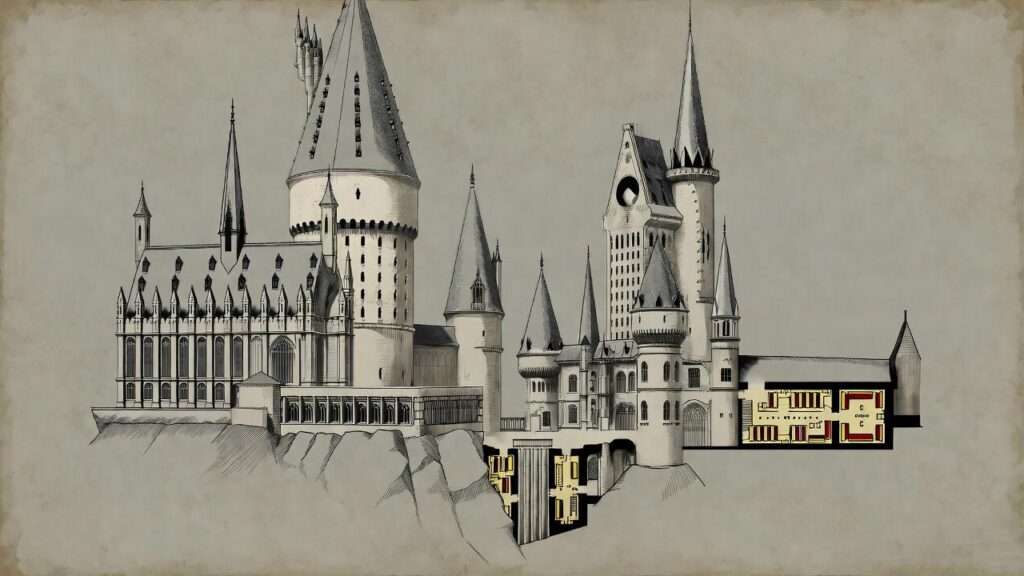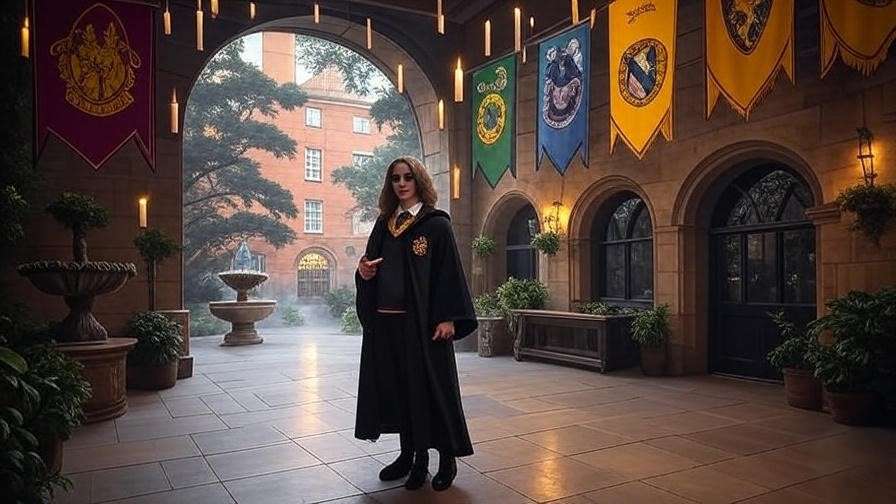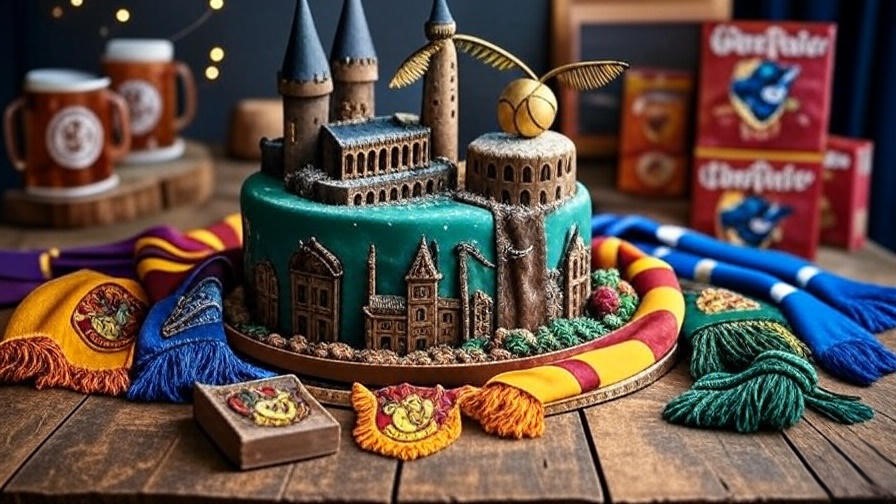Imagine standing at the gates of Hogwarts School of Witchcraft and Wizardry, the sprawling castle looming before you with its towering spires and enchanted walls. For Harry Potter fans, the plan of Hogwarts Castle is more than just a layout—it’s a gateway to immersing yourself in J.K. Rowling’s magical world. Whether you’re a fanfiction writer crafting a new adventure, a gamer exploring Hogwarts Legacy, or a visitor planning a trip to Universal Studios’ Wizarding World, understanding the castle’s intricate design enhances your connection to the series. In this comprehensive guide, we’ll map out Hogwarts’ architecture, iconic locations, and magical elements, offering a detailed resource for fans who want to navigate this legendary castle with confidence.
As a lifelong Harry Potter enthusiast with years of studying J.K. Rowling’s works, official sources like Pottermore, and real-world Hogwarts experiences, I’ve crafted this skyscraper-level guide to answer your questions and solve the challenge of unraveling Hogwarts’ complex layout. From the Great Hall to the Room of Requirement, let’s dive into the magical blueprint of Hogwarts Castle.
The Magical Architecture of Hogwarts Castle
A Brief History of Hogwarts’ Design
Hogwarts Castle, founded over a thousand years ago by Godric Gryffindor, Helga Hufflepuff, Rowena Ravenclaw, and Salazar Slytherin, stands as a masterpiece of magical architecture. Its design draws inspiration from medieval European castles, blending Gothic arches, towering turrets, and sprawling courtyards with enchantments that defy Muggle logic. According to J.K. Rowling, the castle was built in a hidden location in the Scottish Highlands, protected by spells to keep it unplottable. Each founder contributed unique elements to the castle’s layout, from Gryffindor’s grand towers to Slytherin’s subterranean dungeons, creating a structure that reflects their values and personalities.
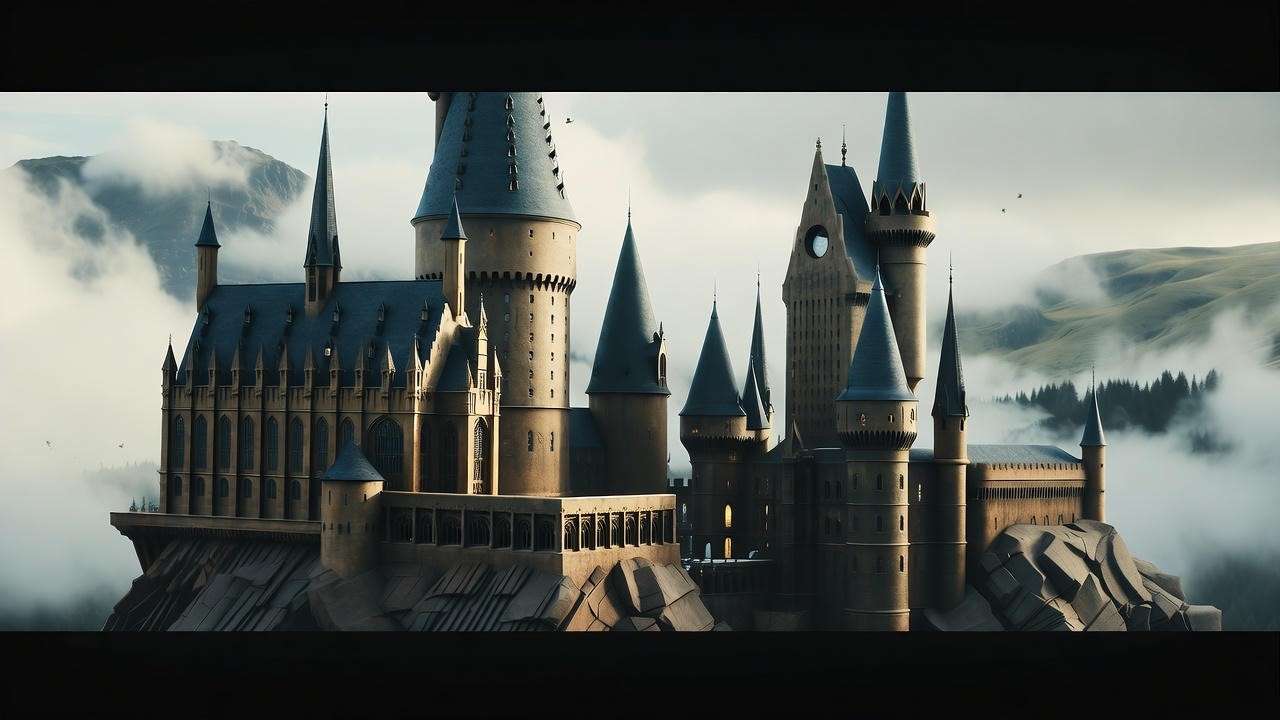
This historical context sets the stage for understanding the plan of Hogwarts Castle. The castle’s design isn’t just aesthetic—it’s a narrative tool that shapes the adventures of Harry, Ron, Hermione, and countless others. Its magical enhancements, like moving staircases and hidden rooms, make it a living, breathing entity that challenges and protects its inhabitants.
The Scale and Structure of the Castle
Hogwarts is a massive, seven-story castle with additional towers, dungeons, and grounds that stretch across acres. While exact measurements are elusive—J.K. Rowling has noted the castle’s layout shifts magically—official sources estimate it houses hundreds of rooms across its floors. The plan of Hogwarts Castle includes key structural elements:
- Seven Floors: Each floor serves distinct purposes, from classrooms to dormitories.
- Moving Staircases: Over 140 staircases shift positions, complicating navigation.
- Enchanted Ceilings: The Great Hall’s ceiling mirrors the sky, a hallmark of Hogwarts’ magic.
- Hidden Passages: Secret tunnels and rooms, like the Room of Requirement, add mystery.
These features make Hogwarts a labyrinthine marvel, requiring a detailed map to navigate—a challenge we’ll address in this guide.
Mapping the Plan of Hogwarts Castle: A Floor-by-Floor Guide
The Ground Floor and Entrance Hall
The journey into Hogwarts begins at the Entrance Hall, a grand chamber with towering doors and a marble staircase leading to the upper floors. This hub connects to the Great Hall, the heart of Hogwarts where students gather for meals, the Sorting Ceremony, and major events like the Triwizard Tournament. The Great Hall’s enchanted ceiling, which reflects the weather outside, is a fan-favorite feature described vividly in Harry Potter and the Sorcerer’s Stone. Adjacent rooms, like the staff room and antechambers, serve as gathering spots for professors and house-elves.
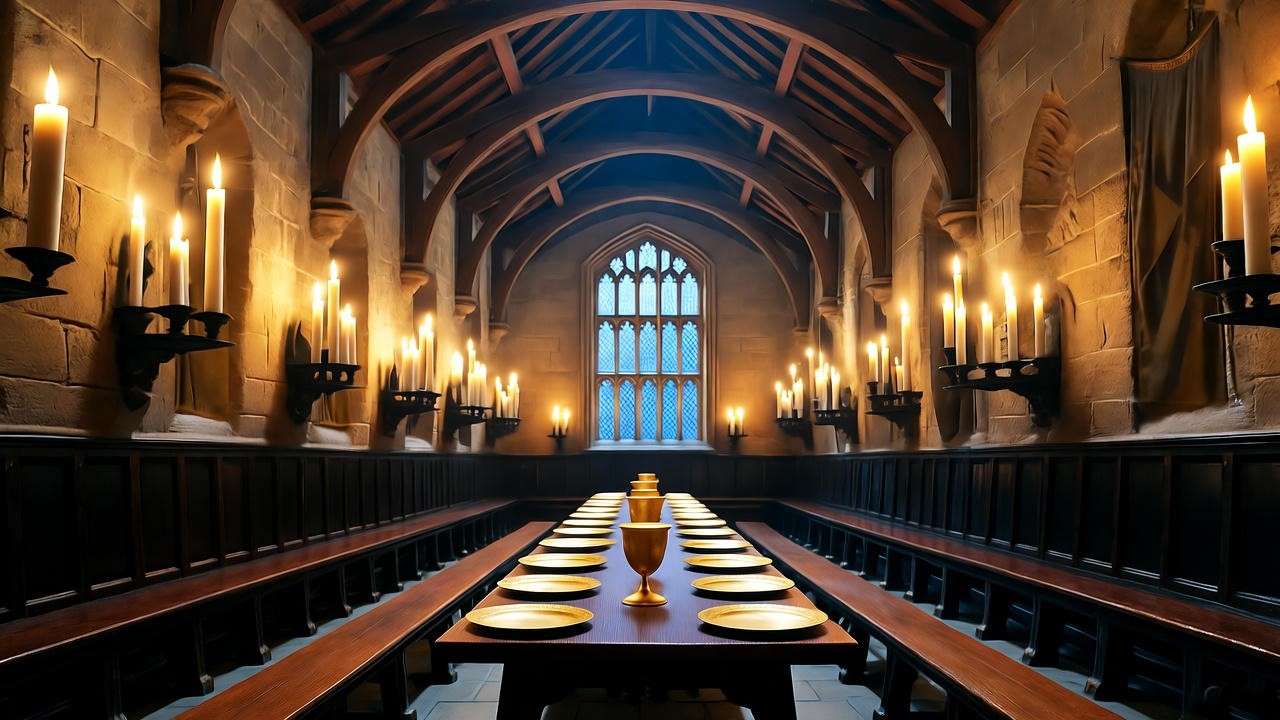
For fans, understanding the ground floor’s layout is essential for visualizing key scenes, such as Harry’s first Sorting Ceremony or the Yule Ball. The Entrance Hall’s central role makes it a starting point for exploring the plan of Hogwarts Castle.
The Upper Floors: Classrooms and Common Rooms
The upper floors of Hogwarts house critical areas like classrooms and the four house common rooms. Key classrooms include:
- Transfiguration Classroom (First Floor): Where Professor McGonagall teaches shape-shifting magic.
- Charms Classroom (Third Floor): Home to spells like Wingardium Leviosa.
- Defense Against the Dark Arts (Various Floors): Infamous for its rotating professors.
The house common rooms, each with unique entrances and aesthetics, are scattered across the castle:
- Gryffindor Common Room (Seventh Floor): Accessed via the Fat Lady’s portrait, it’s a cozy space with red and gold decor.
- Ravenclaw Common Room (Ravenclaw Tower): Known for its airy, intellectual vibe.
- Hufflepuff Common Room (Near the Kitchens): A warm, earthy space reflecting loyalty.
- Slytherin Common Room (Dungeons): A sleek, green-tinted room beneath the Black Lake.
These locations are vital for fans writing fanfiction or exploring Hogwarts in games, as they anchor house-specific narratives.
The Towers: Astronomy, Ravenclaw, and More
Hogwarts’ towers add verticality to its layout, housing specialized areas like the Astronomy Tower, where students study the stars, and Ravenclaw Tower, home to the eagle-themed common room. The Headmaster’s Office, located in a separate tower, is guarded by a gargoyle and contains treasures like the Pensieve. These towers, often featured in dramatic scenes (e.g., Dumbledore’s fall in Half-Blood Prince), are iconic parts of the plan of Hogwarts Castle.
The Dungeons and Lower Levels
The lower levels of Hogwarts, including the dungeons, are as fascinating as the upper floors. The Slytherin Common Room, located beneath the Black Lake, features windows with eerie underwater views. The Potions classroom, taught by Professor Snape, is a cold, shadowy space perfect for brewing. Hidden areas like the Chamber of Secrets, accessible only to Slytherin’s heir, add intrigue to the castle’s underbelly. For fans, these areas evoke the darker, more mysterious aspects of Hogwarts’ design.
Magical Elements That Shape the Castle’s Layout
Moving Staircases and Hidden Passages
One of the most iconic features of the plan of Hogwarts Castle is its moving staircases, a network of over 140 staircases that shift unpredictably, as seen when Harry and Ron struggle to navigate them in Harry Potter and the Sorcerer’s Stone. These enchanted staircases, described by J.K. Rowling as a whimsical yet challenging aspect of Hogwarts, reflect the castle’s magical personality. They force students to adapt, making navigation an adventure in itself.
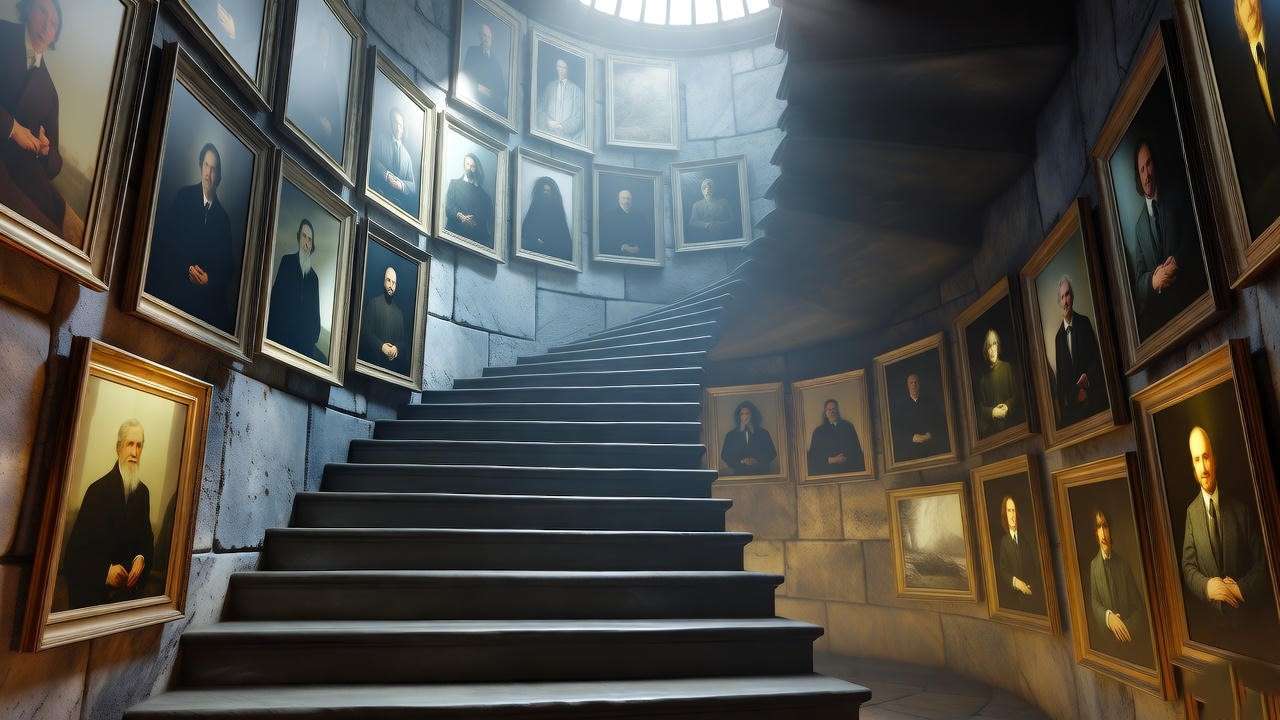
Equally intriguing are the castle’s hidden passages, which add depth to its layout. The Marauder’s Map, introduced in Prisoner of Azkaban, reveals secret tunnels like the One-Eyed Witch Passage, which leads to Hogsmeade’s Honeydukes. Other passages, such as those behind tapestries or mirrors, connect distant parts of the castle, offering shortcuts for savvy students like Fred and George Weasley. For fans, understanding these passages is key to crafting authentic fanfiction or imagining Hogwarts adventures, as they embody the castle’s secretive charm.
Expert Tip: When writing Hogwarts-based fanfiction, use the Marauder’s Map as a plot device to guide characters through hidden passages, but ensure consistency with canon locations to maintain authenticity.
Enchanted Features: Ceilings, Portraits, and Rooms
Hogwarts’ magical elements extend beyond staircases to include enchanted features that define its layout. The Great Hall’s enchanted ceiling, which mirrors the sky outside, is a marvel of magical engineering, described in Sorcerer’s Stone as “bewitched to look like the sky outside.” This feature not only enhances the castle’s grandeur but also serves as a narrative backdrop for key moments, like the announcement of the Triwizard Tournament.
The castle’s portraits are another dynamic element, with figures like the Fat Lady guarding Gryffindor Tower or Sir Cadogan offering comedic detours. These portraits, capable of movement and conversation, act as both security and storytellers, adding life to the plan of Hogwarts Castle. The Room of Requirement, located on the seventh floor, is perhaps the most versatile space, appearing only when needed and transforming to suit its user’s purpose—whether as a training ground for Dumbledore’s Army or a hiding place for Draco Malfoy.
These enchanted features make Hogwarts a living entity, and understanding their placement enhances fans’ appreciation of the castle’s design. For example, knowing the Room of Requirement’s location near the tapestry of Barnabas the Barmy helps writers and gamers visualize its accessibility.
Why Understanding the Plan of Hogwarts Castle Matters for Fans
Enhancing Your Harry Potter Experience
For Harry Potter fans, grasping the plan of Hogwarts Castle deepens engagement with the series across multiple mediums. In the books, the castle’s layout shapes pivotal moments, from Harry’s midnight wanderings to battles in Deathly Hallows. In films, the sweeping visuals of Hogwarts’ towers and halls create an immersive backdrop. In games like Hogwarts Legacy, players explore a detailed rendition of the castle, making knowledge of its layout essential for navigation and quest completion.
This understanding also enriches fan activities. Cosplayers can recreate iconic locations like the Great Hall for conventions, while fanfiction writers can craft stories grounded in accurate settings. Visiting Universal Studios’ Wizarding World of Harry Potter becomes more exciting when you recognize the layout of Hogsmeade or the castle’s exterior, connecting real-world experiences to the fictional plan of Hogwarts Castle.
Practical Uses: From Fanfiction to Theme Park Navigation
The plan of Hogwarts Castle has practical applications for fans. For fanfiction writers, a detailed map ensures narrative consistency—knowing that the Gryffindor Common Room is on the seventh floor, for instance, prevents errors in character movement. When writing, consider these tips:
- Reference Canon Sources: Use descriptions from the books or Pottermore to place scenes accurately.
- Incorporate Magical Elements: Include moving staircases or the Room of Requirement to add authenticity.
- Map Key Routes: Plan character paths using known passages, like the shortcut to Hogsmeade.
For theme park visitors, understanding the castle’s layout enhances trips to Universal Studios’ Wizarding World. The Hogwarts Castle replica in Orlando and Hollywood includes areas like the Defense Against the Dark Arts classroom and Dumbledore’s Office. Knowing the plan of Hogwarts Castle helps fans navigate these attractions, locate hidden details (like house-elf statues), and maximize their experience.
Expert Tip: At Universal Studios, look for subtle nods to the castle’s layout, such as the moving staircases in the queue for Harry Potter and the Forbidden Journey. Plan your visit to explore both Hogsmeade and Diagon Alley for a complete Wizarding World experience.
Expert Insights: How J.K. Rowling Crafted Hogwarts’ Layout
J.K. Rowling’s genius in designing Hogwarts lies in its ability to feel both familiar and fantastical. In interviews, Rowling has shared that she envisioned Hogwarts as a sprawling, unpredictable castle inspired by British boarding schools and medieval fortresses. She sketched early versions of the plan of Hogwarts Castle to ensure consistency, a process detailed on Pottermore (now Wizarding World). The castle’s shifting layout reflects its narrative role: a place of mystery, discovery, and danger.
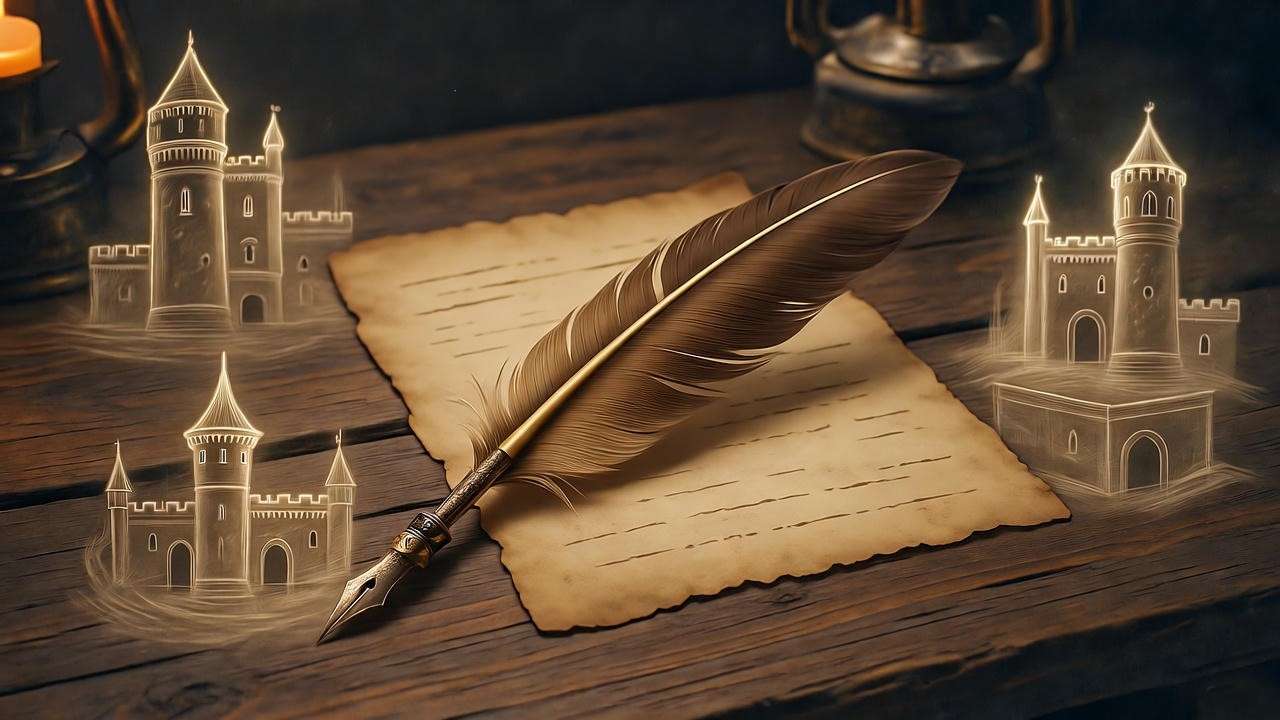
Rowling’s world-building ties the castle’s design to its story. The Room of Requirement, for example, symbolizes adaptability, appearing when characters need it most. The moving staircases mirror the challenges of growing up, forcing students to navigate uncertainty. By grounding Hogwarts in both magical and historical elements, Rowling created a setting that feels timeless yet alive, a testament to her storytelling expertise.
Visualizing the Plan of Hogwarts Castle
Official and Fan-Made Maps
Mapping Hogwarts is a challenge due to its magical nature, but several resources help fans visualize the plan of Hogwarts Castle. Official sources, like Pottermore and the Harry Potter film blueprints, provide partial layouts, detailing areas like the Great Hall and common rooms. The Marauder’s Map, as depicted in Prisoner of Azkaban, offers a detailed view of the castle’s floors and passages, though it omits some areas like the Chamber of Secrets.
Fan-made maps, available on communities like Reddit or DeviantArt, fill in gaps with creative interpretations. While not canon, these maps often combine book and film details to create comprehensive guides. For reliable resources, check Wizarding World’s archives or fan sites like The Harry Potter Lexicon, which offer well-researched layouts.
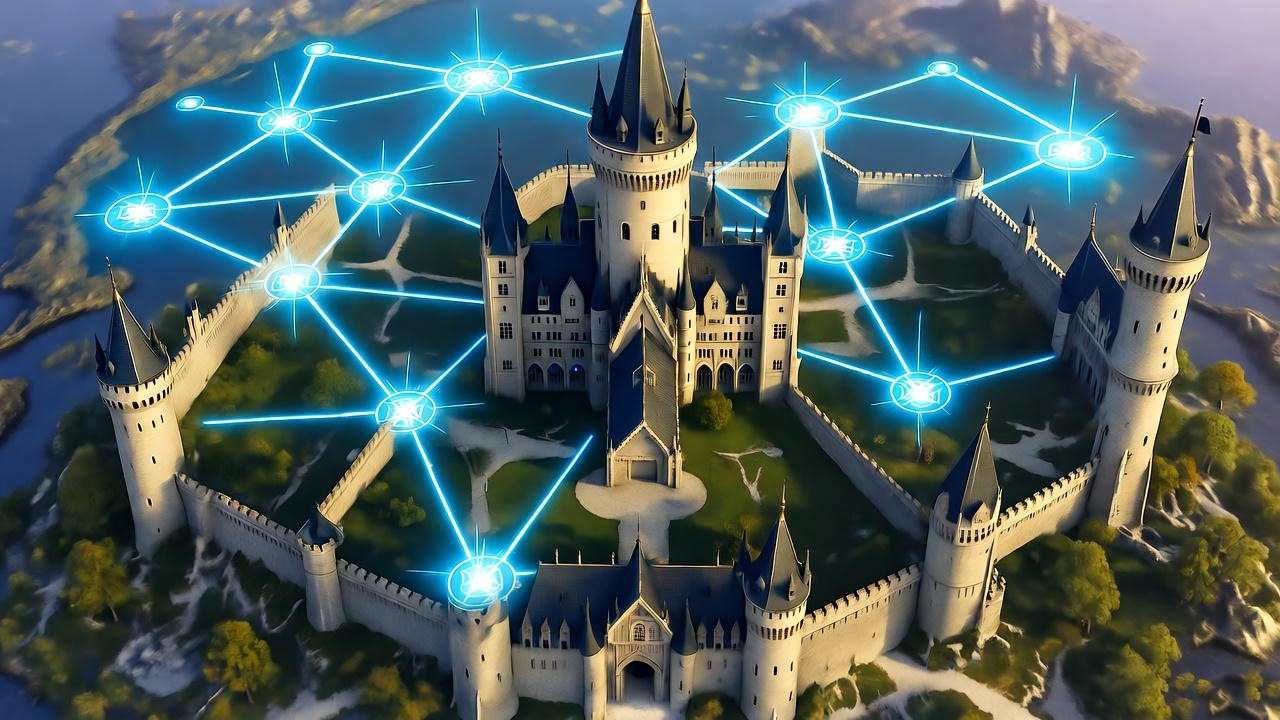
Visiting Hogwarts Virtually or In-Person
Fans can explore Hogwarts through digital and real-world experiences. Hogwarts Legacy, a 2023 action RPG, offers a detailed, interactive version of the castle, allowing players to roam classrooms, towers, and hidden passages. The game’s plan of Hogwarts Castle is one of the most accurate digital renditions, making it a valuable tool for fans.
In-person, the Warner Bros. Studio Tour in London provides a behind-the-scenes look at Hogwarts’ sets, including the Great Hall and Dumbledore’s Office. Universal Studios’ Wizarding World of Harry Potter brings the castle to life with rides and immersive areas. These experiences let fans walk through the plan of Hogwarts Castle, connecting fictional and real-world magic.
FAQs About the Plan of Hogwarts Castle
Q: How big is Hogwarts Castle?
A: While exact dimensions aren’t specified, Hogwarts spans seven floors, multiple towers, and extensive grounds. J.K. Rowling has described it as vast, with hundreds of rooms, making it larger than most real-world castles.
Q: Where is the Room of Requirement located?
A: The Room of Requirement is on the seventh floor, opposite the tapestry of Barnabas the Barmy. It appears only when someone walks past three times, thinking of their need.
Q: How do the moving staircases work?
A: Enchanted to shift positions, the staircases move unpredictably, as seen in Sorcerer’s Stone. They’re controlled by the castle’s magic, requiring students to memorize patterns or use tools like the Marauder’s Map.
Q: Are there official maps of Hogwarts?
A: Partial maps exist via Pottermore and the Marauder’s Map, but no complete official map covers every area. Fan-made maps supplement these resources.
Understanding the plan of Hogwarts Castle unlocks a deeper connection to the Harry Potter universe, whether you’re writing fanfiction, playing Hogwarts Legacy, or visiting Universal Studios. From the Great Hall’s enchanted ceiling to the Room of Requirement’s hidden magic, the castle’s layout is a testament to J.K. Rowling’s world-building genius. This guide has mapped out its floors, magical elements, and practical uses, offering fans a comprehensive resource to explore Hogwarts with confidence.
What’s your favorite Hogwarts location? Share in the comments or join our fan community to discuss the castle’s secrets. For more, visit the Wizarding World website, explore Hogwarts Legacy, or plan a trip to Universal Studios to experience Hogwarts firsthand. Mischief managed!

